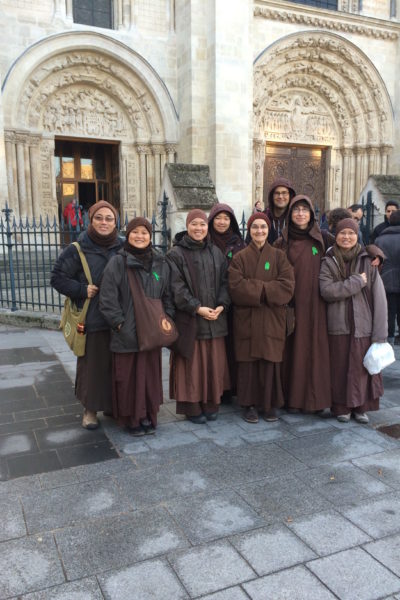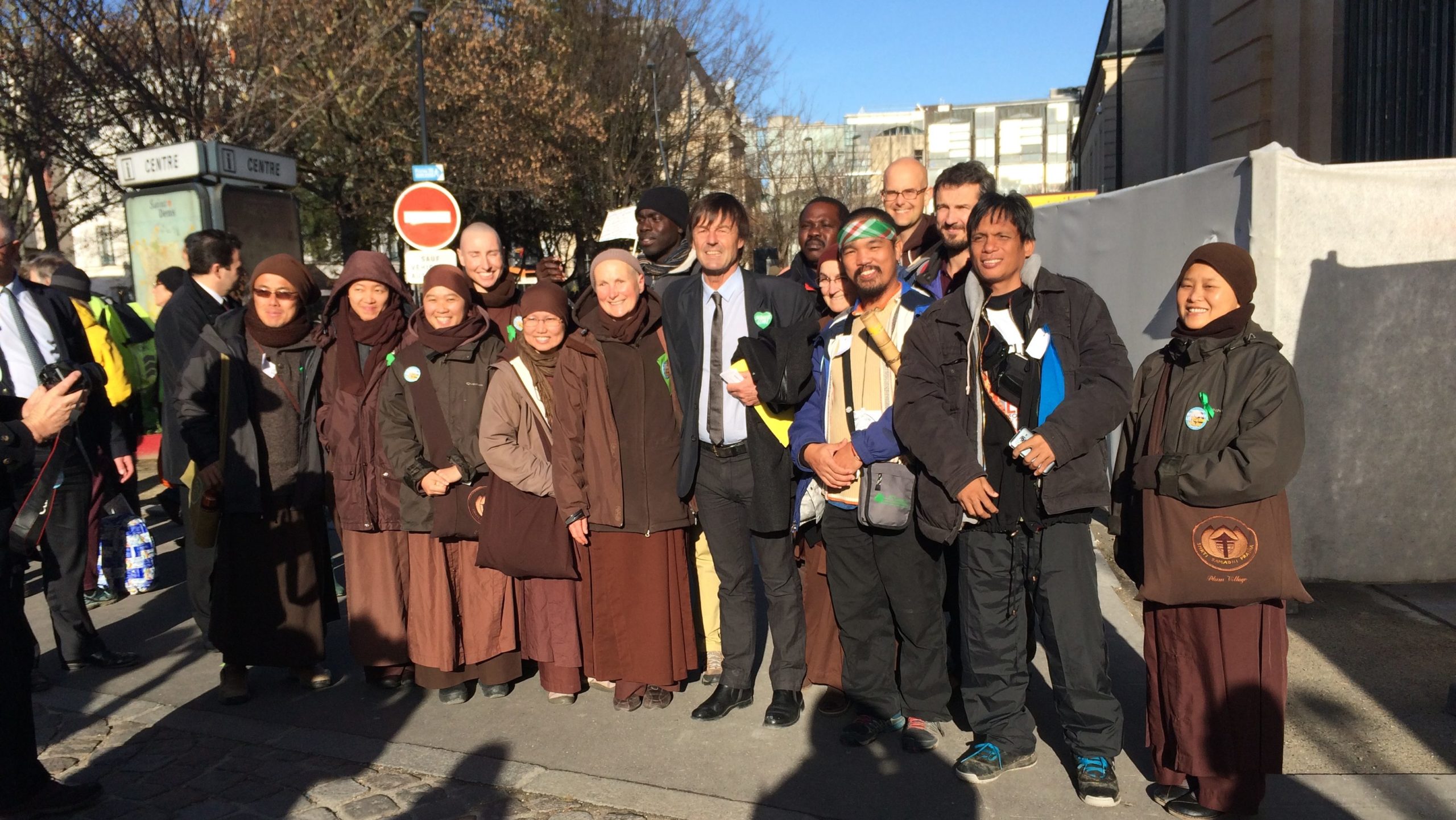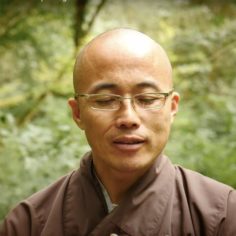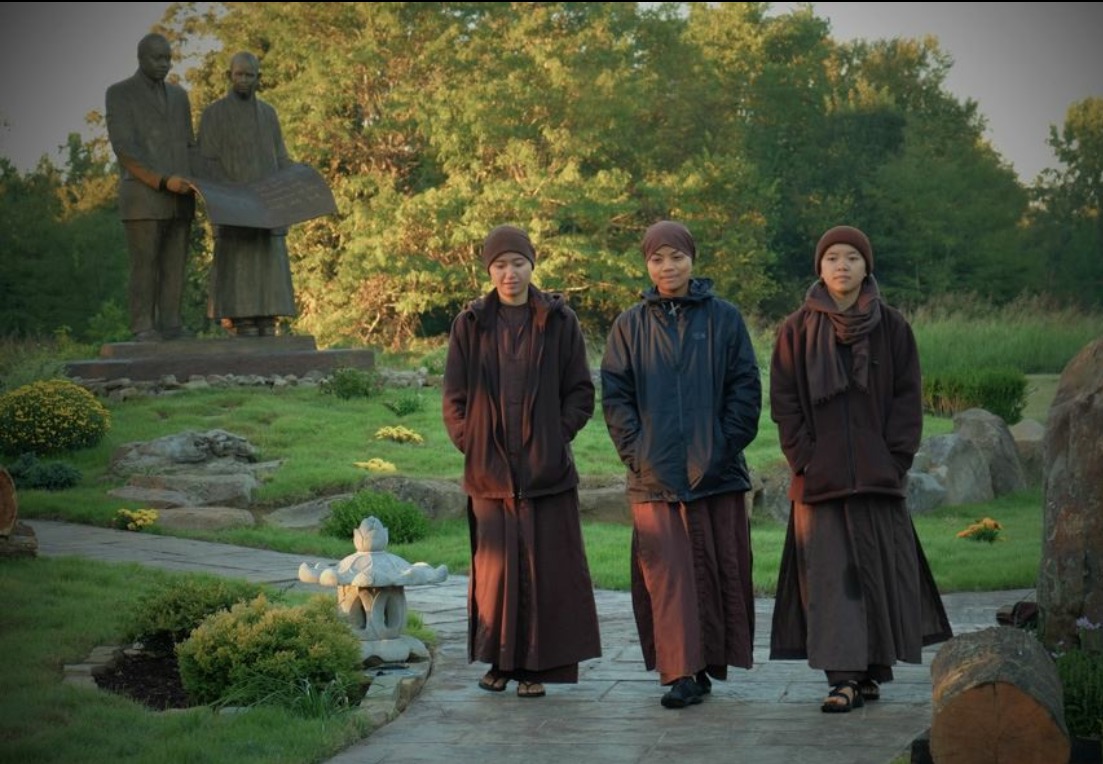
By Brother Pháp Dung in June 2016
Once again a generation is called to stop, reflect, and take action for the collective, for our common home. The 2015 Paris Climate Conference was an opportunity for our human family to pause and look at the reality of the situation, and to discover whether or not we can unite around a common cause.

By Brother Pháp Dung in June 2016
Once again a generation is called to stop, reflect, and take action for the collective, for our common home. The 2015 Paris Climate Conference was an opportunity for our human family to pause and look at the reality of the situation, and to discover whether or not we can unite around a common cause. The conference aimed to achieve, for the first time in twenty years, a legally binding, universal agreement of 195 countries to keep global warming below 2°C and protect the Earth from dangerous climate change.
To help realize this aspiration, faith communities and indigenous communities were encouraged to contribute their voices, and Plum Village was one group invited to participate. For our monastic delegation, and for our wider community, this has been a chance to find ways to engage with this issue and to look deeply at where we are, both personally and collectively, and to see clearly our direction going forward.
GROWTH WITH RESTRAINT
What did the final Paris Agreement mean for the world and for us? It raises our awareness that in the centuries to come, there is a strong need for collective cooperation. It is the only option. Much like when the world witnessed and felt the collective horror of the atomic bombs dropped on Hiroshima and Nagasaki at the end of the Second World War, whatever one country does (or does not do) now will impact us all. Just as global warfare was changed forever by the invention of the atomic bomb, the climate crisis has changed international development. We can no longer have infinite growth on a finite planet. We cannot progress as a nation at the expense of other nations or to the detriment of our planet. The Paris Agreement that affirms restraint and moderation are now needed, and each nation can no longer pursue economic growth and advancement without considering the rest of the world. It is a kind of vinaya (code of development) for the planet.
Compromise and restraint will be the ultimate challenge for our generation. As leading climate scientists wrote in a public letter: “People wanted to hear that an agreement had been reached on climate change that would save the world while leaving lifestyles and aspirations unchanged.” But the reality is that lifestyles and aspirations will have to change. The perennial challenge for our species has always been to balance our individual pursuits with the interests of the collective and, more pertinent now, with the survival of our planet as we know it.

COLLECTIVE AND INDIVIDUAL RESPONSIBILITY
Fortunately, in our community we have methods and practices that bring these two fronts together: addressing both collective global issues and individual choices and lifestyles. Before participating in the Paris conference, we called on members of our Plum Village community to practice five specific actions in support of the conference and the delegates. The first practice was to fast from meat and dairy products for the duration of the conference, from November 30 to December 11, as a prayer for the environment. Second, we asked everyone to make at least one commitment of action in their daily life from our list of actions to protect the environment. Third, we encouraged people to come together in their families, communities, or Sanghas to support each other and to share about ways to help the climate crisis. The fourth practice was to join the “People’s March” in their local city as part of the global people’s movement for climate change. Lastly, we asked people to wear a green ribbon as a reminder for themselves and to raise awareness with those around them. There were those who discounted these actions as merely symbolic expressions of personal concern—as token gestures that distract us from engaging in campaigns and actions in the public arena that challenge and disrupt the systems responsible for the crisis.
These five actions invited people to look deeply at the way they were living and affecting the climate. Like the robes or shaved head of a monastic, they are both a symbol and an action of resistance to the system: an alternative choice of lifestyle that is more harmonious to the state of the world and less impactful to the environment. Our action is not to retreat from society and the world. When we practice walking meditation, it is not symbolic. We practice walking meditation not only for our personal enjoyment and spiritual growth, but also as an action of resistance against the speed of our consumer society. And when we choose to move towards a vegan diet, it is the most practical action we can take at least three times a day to nourish our personal commitment and to reduce damage to the planet. Not only are we choosing to not support the system of mass industrial agriculture or the meat industry; we’re choosing to support our reverence for life.
A STATUE OF RESPONSIBILITY
At the Paris conference, there was a giant art sculpture of the Eiffel Tower made of red patio chairs screwed together—red, as a symbol of the terrorist attacks on their city, and patio chairs as a symbol of the common life found in the Parisian streets and the cafes that were attacked. We could not help but remember the gift of the Statue of Liberty that France made to America in 1886 as a symbol of their alliance and their common ideal of life, liberty, and the pursuit of happiness. We recall how Thich Nhat Hanh once suggested that what America and the world need now is a Statue of Responsibility, and he even proposed for it to be erected in San Francisco Bay, on America’s other coast.
When we returned to the monastery, our delegation gave a presentation about what we learned from the conference and how we see our community’s contribution and engagement. We learned that the nuns from our hamlets got together to look deeply at what further changes they could make in their hamlet to save water and electricity and to be more efficient and less wasteful.
People have wondered why, in recent years, Thay has not been as politically active as he was during the Vietnam War. Why hasn’t he spoken out more publicly on current social conflicts and issues? Why he is just teaching how to breathe and smile, leading mindfulness retreats for the general public? Thay has taught us that when a person is able to stop, silence their mind, and see clearly the root of their suffering and take care of it, they have a chance to touch true happiness. From this personal realization (insight) they will heal and transform, and thus have the energy to aspire to help and be of benefit to others. Only when we have developed a practice that helps us to slow down, and touch peace and happiness right in the present moment, will we have the time and space in our mind to look deeply at the state of the world and our responsibility in it.
This is what we have witnessed over and over again at all our retreats and at our practice centers. After just five days or a week of mindfulness practice and community living, people aspire to commit to the Five Mindfulness Trainings. They are motivated and determined to return home to reconcile with their loved ones and find a lifestyle that is more happy, healthy, and responsible. Thay has always emphasized the importance of practicing the Trainings and cultivating mindfulness in our everyday actions. When we are mindful, we can see that by refraining from doing one thing, we can prevent another thing from happening. We arrive at our own unique insight. It is not something imposed on us by an outside authority. We renew our hope for the future and realize our common aspiration.
The twentieth century saw the liberation of many peoples and countries from oppression and exploitation. In India, Gandhi led his people in a nonviolent revolution to free his country from British Rule. In the United States, Dr. Martin Luther King led African-Americans in a nonviolent movement for civil and racial justice, and Susan B. Anthony led the battle for women’s suffrage. In Vietnam and other developing countries, the common people rose up to free themselves from colonial rule and exploitation. And in other affluent countries, the poor and discriminated-against also rose up in protest for their rights and equality.
As this century unfolds, there is a need for awareness that freedom must go hand in hand with responsibility. The pursuit of liberty and happiness should not infringe on the right to life of other species and of our planet. The Paris Climate Conference has made our inseparable connection to one another clear to the world, whether we choose to accept it or not. It is not a matter of belief or philosophy. It is an evident scientific truth. It is now our practice to be more aware and mindful of this interconnection and the responsibility that this entails for our own generation and many generations to come.
Excerpted with permission from “Reflections on the Paris Climate Conference,” published at plumvillage.org/news/paris-climate-conference.


